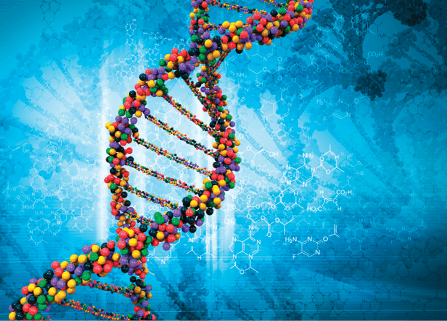Improved Food Safety and Public Health by Using Whole Genome Sequence Analysis
The Meeting
 A public meeting is being hosted by the Food Safety and Inspection Service (FSIS), the Food and Drug Administration (FDA), the Centers for Disease Control and Prevention (CDC), and the National Center for Biotechnology Information (NCBI) on Thursday and Friday, October 26 and 27, 2017. The purpose of the meeting is to protect consumers from foodborne illnesses in the USA and countries all over the world by laying the foundation for the use of whole-genome sequencing (WGS).
A public meeting is being hosted by the Food Safety and Inspection Service (FSIS), the Food and Drug Administration (FDA), the Centers for Disease Control and Prevention (CDC), and the National Center for Biotechnology Information (NCBI) on Thursday and Friday, October 26 and 27, 2017. The purpose of the meeting is to protect consumers from foodborne illnesses in the USA and countries all over the world by laying the foundation for the use of whole-genome sequencing (WGS).
Why Whole-Genome Sequencing (WGS)
WGS analyses can determine the relationship between different bacterial isolates with higher resolution than other analytical methods, and can characterize genes and other features of bacterial genomes.
The FSIS intends to analyze and generate WGS data and use it as part of the decision-making in investigations of foodborne outbreaks, and share this data with Federal food safety partners.
The FSIS is currently considering WGS analysis as an important tool in the characterization of food pathogens. The method uses 1-10 million base units for each bacterium, almost the entire genomic sequence. WGS provides a sturdy estimate of the relationship between sequences, allowing for further classification of individual genes. WGS can reveal the bacterial genetic fingerprints and can show clues about antimicrobial resistance, genetic relationships, and key markers that help scientists respond more effectively to food contamination.
Another use of the WGS is to identify antimicrobial resistance genes to identify genes related to emerging resistance to beta-lactamase, colistin, linezolid and other critically essential antibiotics.
According to the FSIS, WGS is rapid, precise, cost-effective, and easy-to-use and can be applied universally to all foodborne pathogens.
The Database
The database GenomeTrakr was started by the FDA in 2012, as an international network of laboratories sequencing microbial foodborne pathogens and uploading the data to a common public database in real time. The data is stored at the National Center for Biotechnology Information (NCBI), can be accessed by researchers and public health officials.
GenomeTrakr started with a pilot study of WGS-based surveillance for Listeria monocytogenes (Lm). Since its establishment GenomeTrakr and the use of WGS, more illness clusters were detected, and they were detected sooner, and in more cases the illness was linked to Lm food source. The data from a study by Jackson et al., 2016 shows specific improvements that can be gained using WGS, as compared to the use of PFGE analyses. The most successful use of WGS is in foodborne disease surveillance. However, it requires coordination and collaboration to provide a global health benefit for every country that shares its data.
GenomeTrakr has already collected more than 142,000 sequenced strains. It made them available to anyone in the world. This undertaking demonstrates that this kind of large databases can be used to improve food safety in the USA and around the world.

The future
The FSIS claims that it intends to continue to upload all WGS data to the database and make it readily accessible to all food safety and public health partners and stakeholders. The utilization of WGS will enhance resource allocation and decision-making by the FSIS. It expects to obtain greater efficiencies from what was learned from the pilot study of Lm, by improving laboratory workflows for bacterial characterization.
The FSIS and its partners are planning to use WGS in combination with traceback data and epidemiologic evidence to identify the sources of outbreaks more expeditiously. Preventive action based upon WGS has the potential of preventing foodborne diseases and may identify genes associated with virulence.
A meeting between the FDA and the Codex Alimentarius Commission took place recently in Geneva, discussing how to share WGS data internationally. The FSIS and the FDA plan to expand the program in 2018, to identify such pathogens as salmonella, campylobacter and E. coli.
Transcripts
The transcript of the proceedings from the public meeting will be available after the meeting on the FSIS Web site.
